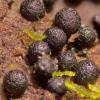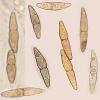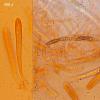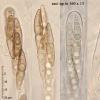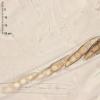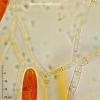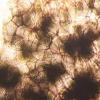
05-12-2025 17:33
 Bruno Coué
Bruno Coué
Bonjour, je serais heureux de recueillir votre avi

07-12-2025 09:24
De la pasada semana en Galicia EspañaEn el suelo

06-12-2025 00:19
 Viktorie Halasu
Viktorie Halasu
Hello, would anyone have this article, please? An

02-12-2025 18:59
This pair of ascos 2.5cm across were on recently b

02-12-2025 19:25
Buckwheat PeteHello, can anyone identify this hairy fungus growi

30-11-2025 12:53
 Edvin Johannesen
Edvin Johannesen
White short-stipitate apothecia found on thin twig
Does anyone have an idea about these small (up to 0.5 mm), gregarious, ostiolate, globose, superficial, never inmersed, black, rough walled but glabrous pseudothecia growing on corticated roots (Prunus spinosa?) near the freshwater of a stream at the hill level?
The ascospores are hyaline, later greyish and finally greyish-brown and they seem to have smooth walls. The asci are bitunicate, 8-spored, narrowly clavate and they arise from croziers. The trabeculate peseudoparaphyses heve many anastomoses. Pseudothecial walls angularis.
Have you some idea for this fungus?
Thanks again
Hi Enrique,
Really no subiculum ?
Ascospores seem to be very slightly striated, aren't they ?
Alain
Hi Alain
Yes. You are right because they are some rest of a subiculum not well visible when the ascomata are wet, but yes when dried. And it's possible the ascospores are very fienelly striate, but very difficult to observe it with my optica.
What's your idea?
Thanks again!
My idea was Byssosphaeria schiedermayeriana, even if we can't see the usual apex.
In wet conditions, it can be hardly recognizable.
You can check it, it's just an idea, perhaps I'm wrong.
Alain
PS : ascospores are perhaps not striate
HI Alain
Perhaps Byssosphaeria is a good genus for my fungus but I think it's not schiedermayeriana because any ascomata has the typical periostiolar color and morphology. By the way I read Barr's paper on Herpotrichia and its allies, and I have not seen a Byssosphaeria species that matches with this fungus.
Thanks, Alain

In that genus the asci are fairly long-stipitate, is it the case here?
Saludos,
Jacques
HI Jacques
Yes. The asci are long stipitate
Thanks for your replay
